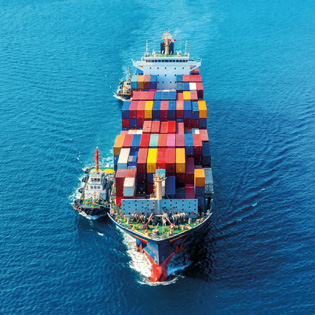
 0
0 AbonnésSe connecter
AbonnésSe connecter


Collection : Essential
Date de parution : 24/11/2025
Prix : 1 950 €HT
Nombre de pages : 87 pages
Langue : Français
Format : PDF (disponibilité immédiate) ou papier
Référence : 25XMTR05
ANALYSER LE MARCHÉ
En plus d'une vision complète de l'environnement du secteur (facteurs économiques, politiques, écologiques, technologiques, etc.), l'étude vous livre notre analyse exclusive sur l'industrie ferroviaire mondiale.
DÉCRYPTER LES DONNÉES FINANCIÈRES DES LEADERS
Cette étude propose un classement des leaders mondiaux et une analyse financière individualisée et agrégée de leurs performances. Elle décrypte notamment l'évolution de leur chiffre d'affaires et de leur taux de résultat d'exploitation.
COMPRENDRE LE POSITIONNEMENT STRATÉGIQUE DES LEADERS
Développement de nouvelles générations de matériel ferroviaire, digitalisation et automatisation au sein du secteur, extension de l'offre de services, prise en compte de l'évolution géopolitique dans la stratégie commerciale : le rapport détaille les leviers de croissance actionnés par chaque leader mondial de l'industrie ferroviaire après l'analyse de leurs principales forces et faiblesses.
LA SYNTHÈSE ET LES PAGES CLÉS DE L'ÉTUDE
La synthèse apporte tous les éléments pour comprendre les tendances majeures du secteur, les évolutions prévisibles, en tirant parti des analyses sur les perspectives du marché et des stratégies des acteurs.
VUE D'ENSEMBLE : ANALYSE PESTEL
LES FACTEURS POLITIQUES
LES FACTEURS ÉCONOMIQUES
LES FACTEURS SOCIAUX
LES FACTEURS ENVIRONNEMENTAUX
LES FACTEURS DE RÉGLEMENTATION
LE MARCHÉ DES ÉQUIPEMENTS FERROVIAIRES
LE COMMERCE EXTÉRIEUR
LE CARNET DE COMMANDES
LE CHIFFRE D'AFFAIRES CUMULÉ DES LEADERS
LE TAUX DE RÉSULTAT D'EXPLOITATION
LA PRÉSENCE GÉOGRAPHIQUE DES LEADERS
SYNTHÈSE DU POSITIONNEMENT DES LEADERS
LES PERFORMANCES INDIVIDUALISÉES
CRRC CORPORATION
ALSTOM
SIEMENS
WABTEC
HITACHI
KNORR BREMSE
STADLER
CAF
THE GREENBRIER COMPANIES
TRINITY INDUSTRIES







Essential est un outil d’analyse économique indispensable pour les professionnels désireux de comprendre et d’analyser en profondeur l’activité d’un secteur. Il permet d’examiner les évolutions majeures, d’anticiper les tendances futures, de cerner les mutations importantes, d’identifier les acteurs clés ainsi que leur positionnement concurrentiel, de comprendre leurs performances. Fort de plus de 800 études couvrant aussi bien le spectre national qu’international, Essential offre des prévisions exclusives et fournit toutes les informations nécessaires pour comprendre les dynamiques sectorielles.
 OLIVIER LEMESLE
OLIVIER LEMESLE
Diplômé de l'IEP de Toulouse et arrivé à Xerfi depuis 2013, Olivier Lemesle est directeur d'études et responsable qualité/formation. Il a notamment en charge l'encadrement des études de la collection Essential, tous secteurs d'activités confondus.
OBTENIR UN EXTRAIT DE CETTE ÉTUDE
╳L'INDUSTRIE FERROVIAIRE MONDIALE1 950 €HT
24/11/2025 | 87 pages | FR 1 950 €HT

L’ÉTUDE A ÉTÉ AJOUTÉE A VOTRE PANIER

POURQUOI UN COOKIE ?Continuer sans accepter >
Le groupe XERFI utilise et stocke des informations non sensibles obtenues par le dépôt de cookies ou technologie équivalente sur votre appareil. L’utilisation de ces données nous permet de mesurer notre audience et de vous proposer des fonctionnalités et des contenus personnalisés. Nous souhaitons ainsi nous assurer que nous fournissons l’expérience la plus informative pour nos visiteurs.
Les données stockées par XERFI ne sont en aucun cas partagées avec des partenaires ou revendues à des tiers à des fins publicitaires. Vous pouvez librement donner, refuser ou retirer à tout moment votre consentement en accédant à notre page de gestion des cookies.
PERSONNALISEZ LE STOCKAGE DE VOS DONNÉES
Vous pouvez librement et à tout moment modifier votre consentement en accédant à notre outil de paramétrage des cookies.